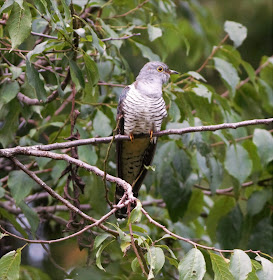 |
| John Young in Diamantina National Park |
The Queensland Government has pledged to continue locking up indefinitely hundreds of thousands of hectares of Diamantina National Park in the Channel Country in a move it claims will help protect the critically endangered Night Parrot.
The government's stand comes as north Queensland naturalist John Young broke his silence over criticism of his Night Parrot research. Young announced he was launching a fresh search for the Night Parrot with Winton publican Paul Nielsen. He compared his treatment with the failure of authorities to act over the disappearance of two Night Parrots in Western Australia after one was fitted with a radio transmitter.
Young resigned from his job as a field ecologist with the Australian Wildlife Conservancy last year amid a furore when critics questioned some of his records. An investigation by the AWC last month raised doubts about a clutch of eggs and a nest found by Young in Diamantina National Park and his reports of the species from Kalamurina in South Australia. Young has told supporters that he stands by his records.
The AWC scrapped not only the records in question but all research data gathered by Young in Diamantina National Park and elsewhere. Young's records of the Night Parrot in the park while working for the AWC were responsible for a 2016 decision by the Queensland Government to declare half the 500,000 hectare park a Restricted Access Area. Anyone entering the area may face heavy fines or a jail sentence.
Although those records are now disowned by the AWC, the state Department of Environment and Science said this week the restrictions would remain in place. The department rejected any suggestion there was now no firm evidence of the parrot's continuing presence in the national park, with a spokesman saying: “Evidence shows the existence of Night Parrots in Diamantina National Park. Given the critically endangered status of the Night Parrot and the potential disturbance to these birds from members of the public, the RAA over the eastern part of Diamantina is strongly justified.”
The spokesman added the RAA also helped restrict access to the adjoining Pullen Pullen Nature Refuge, where Young sensationally rediscovered the Night Parrot and took the first photographs of the species in 2013.
A Night Parrot vanished after it was caught in a mist-net and fitted with a radio transmitter in 2017 by a team headed by Night Parrot Recovery Team chief Allan Burbidge in the Each Murchison region of Western Australia. The bird's mate disappeared soon after. The pair was discovered several months earlier by a group of four WA birders.
Young took to Facebook this week to claim that the “fiasco” had gone unchallenged. “This beggars belief,” he said. “A lot of questions need to be asked here as to why on earth it was allowed in the first place and why has it been just brushed under the carpet...” Young added: “That WA capture of the most mythical bird in the world was completely out of line. Those two birds should have never been interfered with after the brilliant work Nigel [Jackett]and Bruce [Greatwich] put into finding them. Before the slightest hint of even contemplating such a thing, there should have been a long monitoring program to see how many more there were.”
Young described his critics during the AWC row as “vengeful”. He said: “You wonder whether they wake up with demons in their eyes wondering who they can take down to their level... We should all be supporting each other, not trying to undermine each other or trying to walk over each other to show how smart we are. In the process the natural world suffers and I am not going to be part of that.”
Young said he had decided to share publicly much of the information he has gathered about the Night Parrot. “Time to open the doors to give you all a chance to see this priceless bird. Much that is coming will never have been shown or told. I am going to leave no stone unturned. I made the mistake of trying to keep the locations out of site to protect the birds and was damned for it. Time to completely open the floodgates.” Over the next few weeks he would “show as much as I can and give as many hints as possible” on how to find the Night Parrot, but he would not be disclosing specific site information.






























